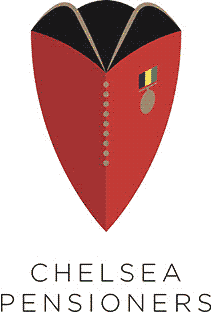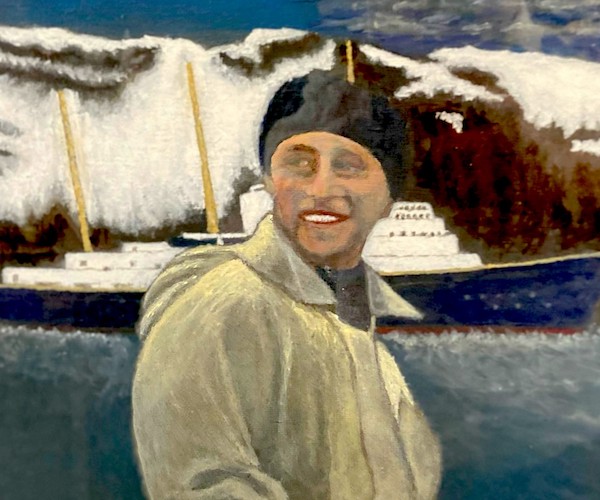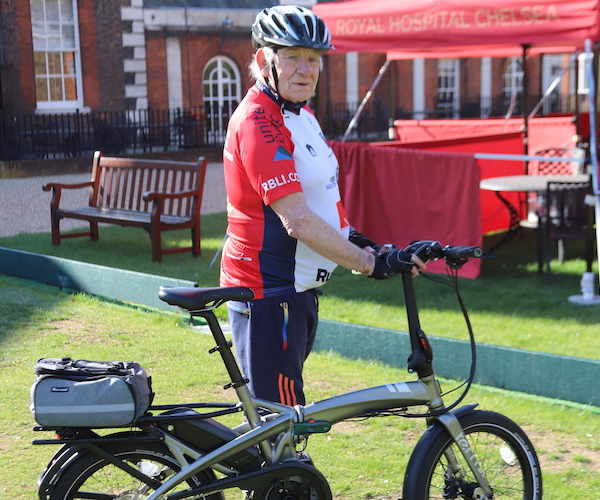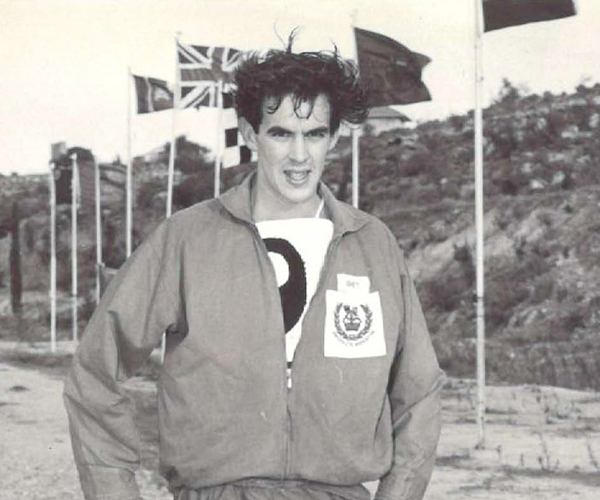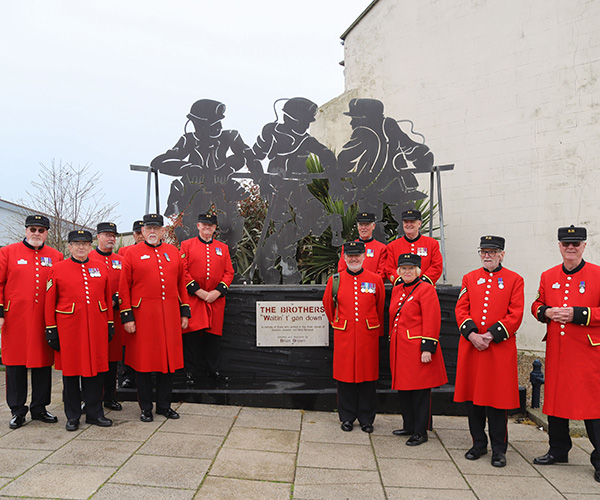Researching our old Burial Ground gives Chelsea Pensioners a new lease of life
20th July 2021
The Royal Hospital’s heritage includes the old Burial Ground, where Chelsea Pensioners were laid to rest from 1692 until 1854, when there was no longer any space. They were subsequently buried in Brompton Cemetery and then in Brookwood, near Woking – although Pensioners’ ashes can still be laid to rest at the Royal Hospital, if that is their wish.
The monuments in the old Burial Ground record Chelsea Pensioners who took part in famous battles, former Governors and other members of staff and their families – and famous figures from the Royal Hospital’s history.
A number of Chelsea Pensioners worked with the veteran heritage charity Soldier On, Tina Kllnan, a specialist in burial archaeology – who is now our heritage manager – and soldiers from Royal Engineers to investigate and record the monuments for posterity. This unique initiative which brings together experts, veterans and serving soldiers, demonstrates how a project can benefit both heritage and the wellbeing of veterans.
A window into the past
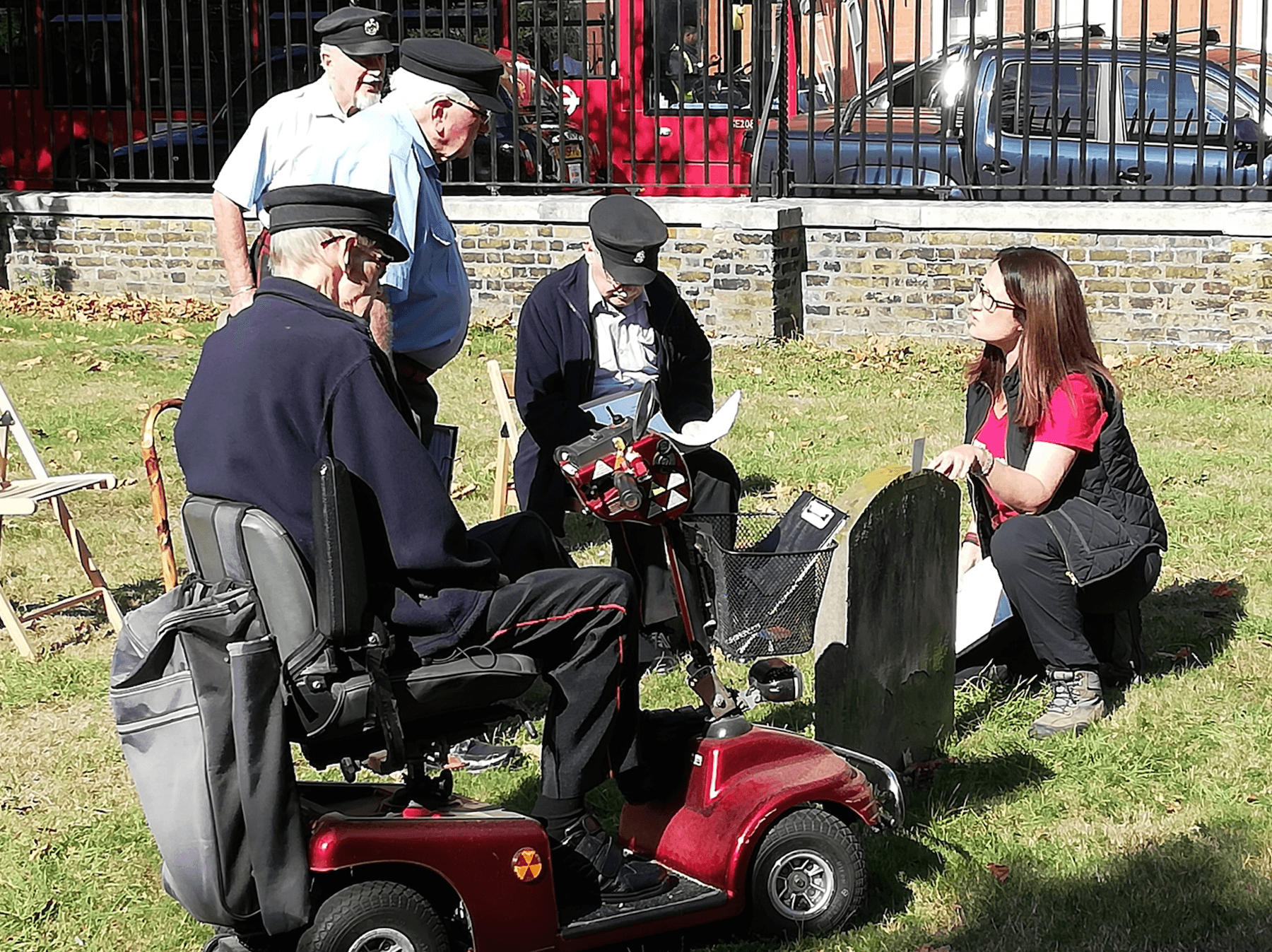
Tina and the Chelsea Pensioners in the Royal Hospital Burial Ground
“Graveyards can tell you a huge amount about society at a particular time and this graveyard spans centuries. Those gravestones are actually some of the oldest heritage artefacts that the Royal Hospital owns, but they’re often forgotten about compared with the artworks hanging on the walls. This project was about recording the information there before it’s lost”
Thanks to previous efforts to record what’s in the burial ground, Tina says that there is good understanding of its history:
“We know exactly who is in there because we have very extensive records. Some of the stones are missing. There were over 10,000 stones at one point – it used to extend further than that little plot, but now there are only a few 100 gravestones left. A number of them have been moved and have been attached to the wall. Although they’re not in their original places, at least they haven’t been thrown away. Some of the stones have been brilliantly conserved, so I think there must have been previous work on them.”
Research and radar
The Pensioners were each given an area of the burial ground to investigate, as participant John Gallagher explains:
“We’d note down the orientation of each gravestone or memorial and do a brief sketch of it. If it was a major monument we noted the accoutrements – usually military symbols like crossed flags, crossed swords – and do a quick measurement. Then you’d feed that back – there was a gazebo where it was digitised.”
John was also interested in the findings of a team of Royal Engineers who investigated what was going on below the headstones:
“They used the radar on some bare patches where they knew people had been buried. It can pick up disturbances in the ground. Apparently, people are buried on top of each other because they didn’t have space. The Pensioners died more frequently then as they were older and had been injured in battle. There wasn’t the medical skill and expertise they have here now.”
Building skills and confidence
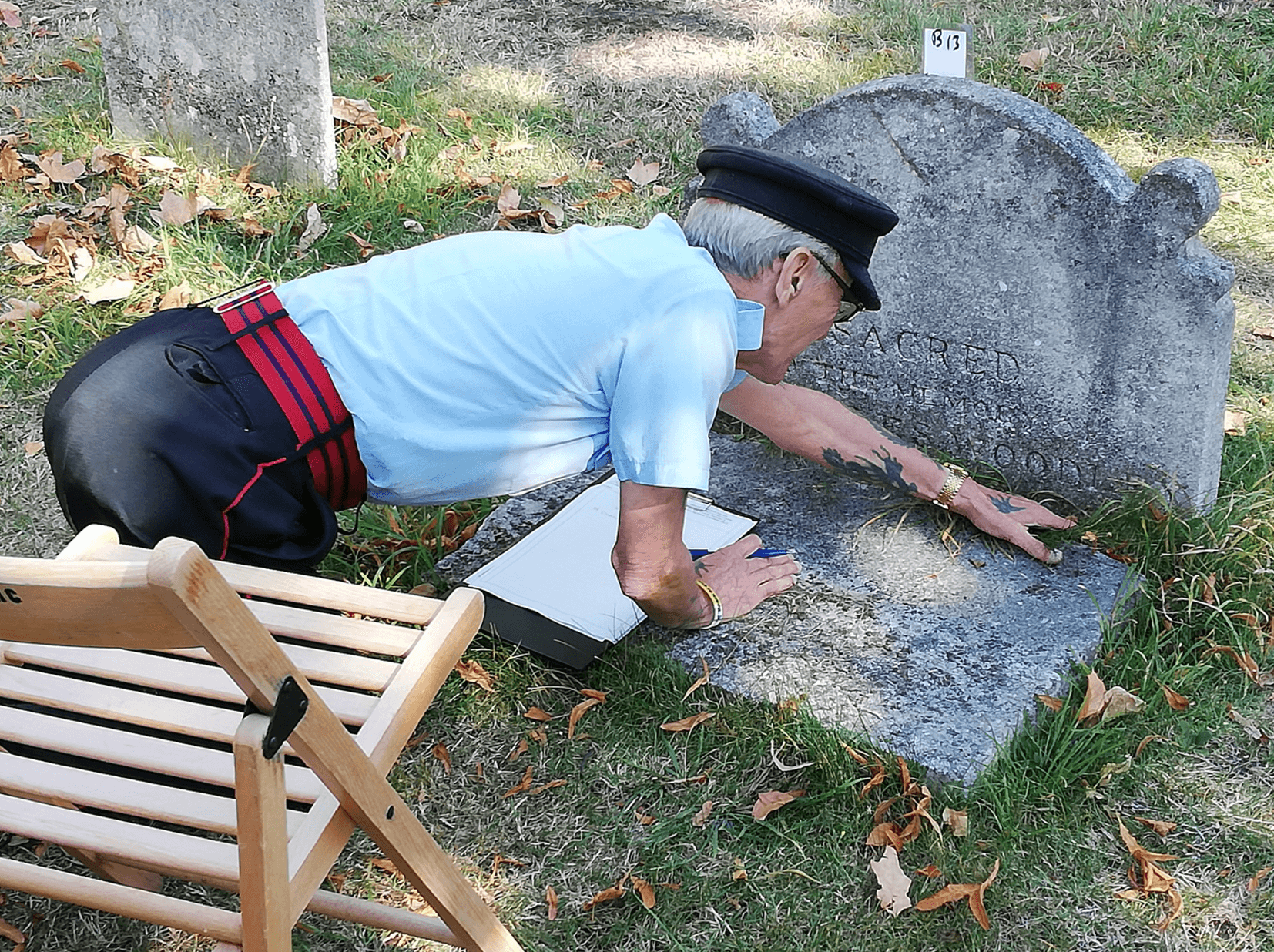
The Pensioners noted the details of each monument.
“I was looking not at the what, but at the why and how – the opportunities that were being presented in terms of an activity that could be performed by people regardless of age, physical ability or experience and which allowed the participants to become more self-aware and to relax.”
Nicholas says the wellbeing benefits of spending two days out in the fresh air and sunshine doing something productive were clear. The fact that the project had a personal significance for today’s Royal Hospital residence was important too, Nicholas says:
“The Pensioners are helping to preserve their own heritage. They’re taking part in a project that really matters, giving them a sense of worth and value.”
It also gave the Pensioners the opportunity to learn new skills:
“We had IT, a research hub in a tent. One Pensioner, an ex military policeman – was inputting the data the other Pensioners provided into a spreadsheet. He was in his 90s and getting to grips with technology!”
Bringing long-dead characters to life
The gravestones in the old burial ground tell a fascinating story. They include former Governors, members of staff and their families – as was typical at that time, many children died heartbreakingly young – as well as veterans of famous battles. It’s rumoured that Mother Ross and Hannah Snell – both of whom disguised themselves as men to become Chelsea Pensioners in the distant past – were laid to rest there.
What is certain, is the identity of the very first Pensioner to be buried at the Royal Hospital – one Simon Box, who served under Charles I, Charles II, James II and King William and Queen Mary. His tombstone records that he was “the first that was interr’d in this burying place” in 1692.
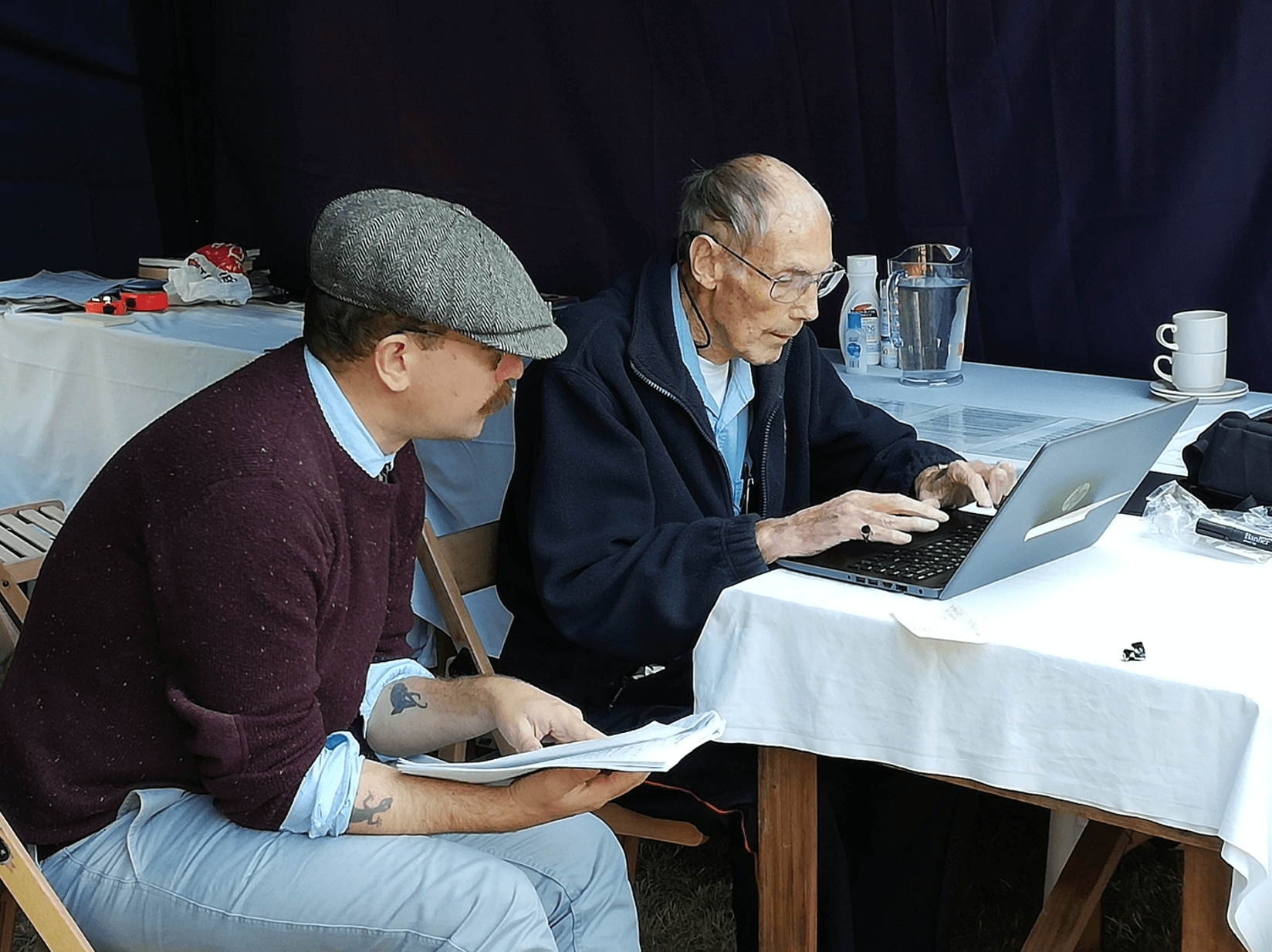
A Chelsea Pensioner learns digital skills as part of the project.
John Gallagher was interested that many ‘ordinary soldiers’ had headstones in the burial ground’s early days, which was unusual. He also found it interesting to link some of the epitaphs with memorabilia in the Royal Hospital’s museum:
“There was a cavalryman called Todd – we have his medal in the museum. He fought in the Army’s four battles in the Crimean, including Balaclava and then took part in the Charge of the Light Brigade and survived it.”
Plans for the future
Although the burial ground project was put on hold, due to the pandemic, there are plans to continue. In the second phase, the aim is to engage with communities beyond the Royal Hospital, who are interested in finding out more, perhaps because they are tracing an ancestor,
The team hopes to work with a technology company to create a digital image of the burial ground, where more information would be revealed with the click of a mouse on a particular location or memorial.
Another idea that Tina is exploring would give Pensioners responsibility for a particular grave:
“I would like to introduce ‘Adopt a grave’ where a Pensioner would research who the person was, get a bit of family and military history and try to work out a biography. We know who’s there, but this would give us a fuller understanding.”
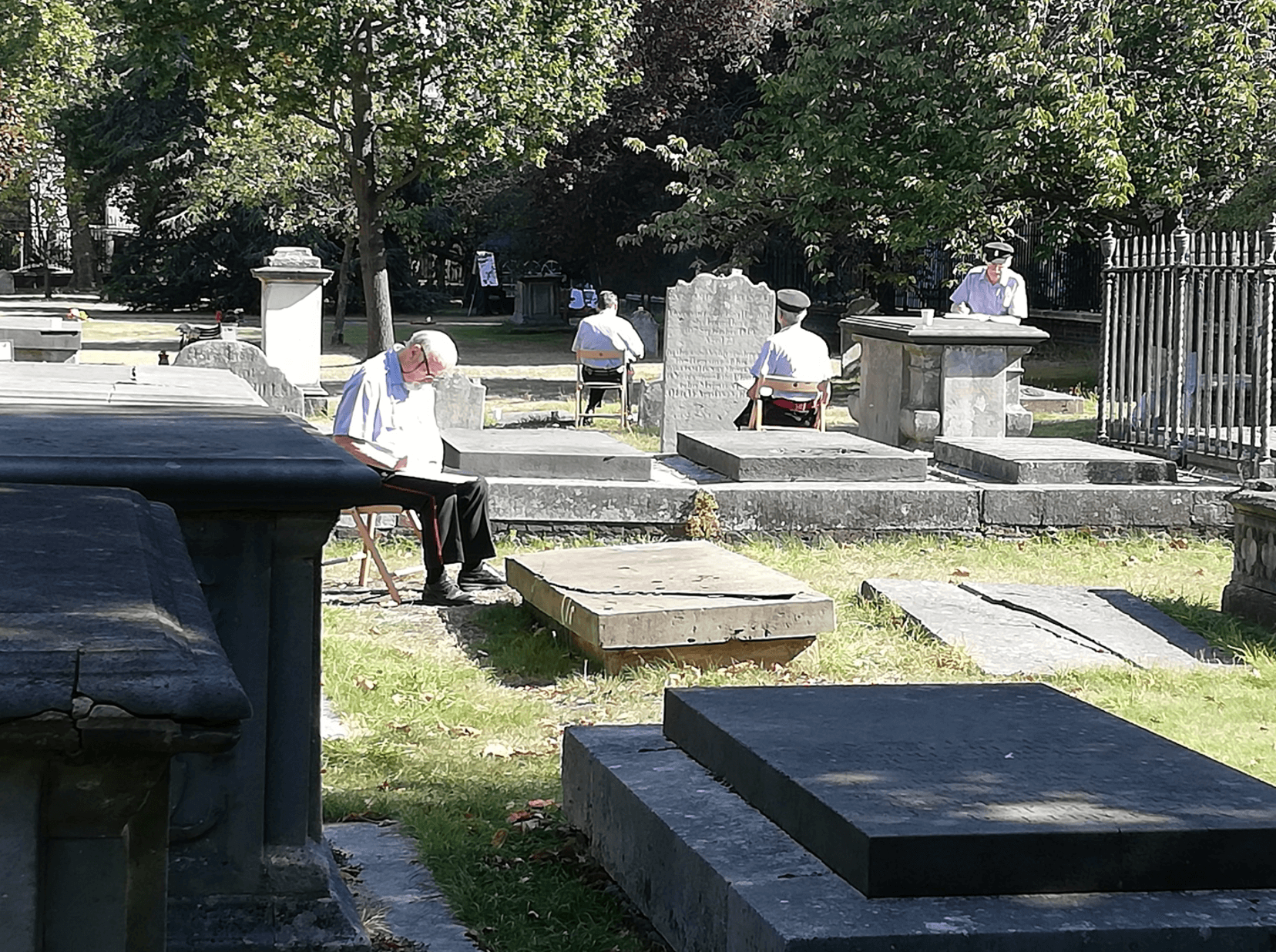
Taking part in a valuable project, out in the sunshine benefited the Pensioners’ wellbeing.
Nicholas believes that the project can deliver a whole range of benefits:
“It’s about people development, improved wellbeing and happiness. There are key skills involved – research, networking, technology. You see what that person is capable of doing and gives them improved confidence in their abilities.”
John Gallagher has a more personal plan for the burial ground – hopefully in the distant future:
“It’s my instructions to put my ashes there – I buried the ashes of one of my mates there. There’s so much history in graveyards like this. People may be dead, but they leave their stories behind them.”
